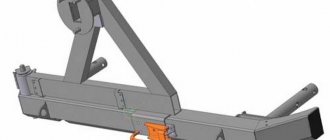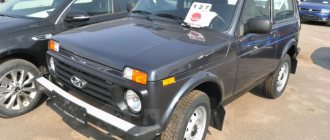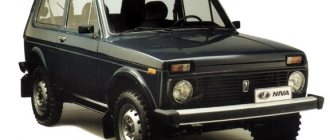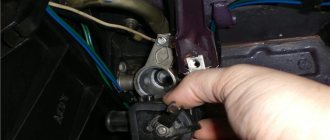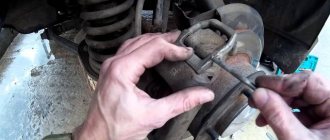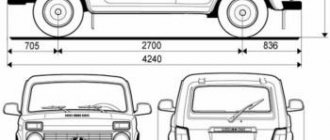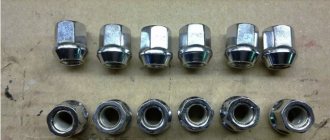The domestic auto industry has not often pleased consumers with high-quality cars. However, there are samples that are worth paying close attention to. For example, a Niva car, the dimensions of which correspond to the dimensions of an SUV. This series has several modifications that are still in demand among the population. Let's look at the structure and features of this car.
History of creation
The first production model of the Niva car, the dimensions of which belong to the category of SUVs, was released in 1977 under the symbol VAZ-2121. The car is made in a station wagon body and has three doors. The main difference from its counterparts is the presence of all-wheel drive. Some details are borrowed from the “six”. Considering the modest technical parameters, it is worth noting the high cross-country ability of this vehicle. The modification became so popular among the people that all subsequent variations were produced without significant changes in the body.
Conveyor production of the VAZ-2121 continued until 1994. Designers constantly improved the engine, transmission and other main components. This model was replaced by an updated version of the SUV under the brands 2123 and 2124. Since 2006, all modifications have been produced under the universal index “4 x 4”.
Useful video
Currently, VAZ 21214 cars are equipped with a four-cylinder 8-valve gasoline engine, which uses a fuel injection system with distributed fuel injection .
The operation of the cylinders has the following order: 1-3-4-2 (counting from the crankshaft pulley).
On the right side of the Niva 21214 engine (along the direction of the car) there are: a generator, a starter, a thermostat, an inlet pipe and an exhaust manifold, a receiver with a throttle assembly, an idle speed regulator, a fuel rail with a fuel pressure regulator and injectors, a coolant temperature sensor, a position sensor throttle valve. An air filter is mounted on a separate bracket, which includes a mass fuel flow sensor.
On the left side: ignition module, spark plugs, oil level indicator, high voltage wires, control instrument sensor - coolant and oil pressure, oil filter, crankshaft position sensor, generator and coolant pump drive.
"Niva": dimensions
The dimensions of the car make it possible to rank it among the group of compact SUVs with a monocoque body. The length of the basic modification is 3740 millimeters. The height and width of the vehicle are 1680 and 1640 mm, respectively. Ground clearance of twenty-two centimeters ensures high cross-country ability of the car.
Separately, it is worth noting the VAZ-2131 model. It is made in a body with five doors, which increases the length by five hundred millimeters. The remaining overall dimensions remained unchanged.
Description
The geometric parameters of cross-country ability are good due to the fairly high ground clearance (220 mm), small body overhangs (approach angle 32, departure angle 37) and a relatively short 2.2-meter wheelbase.
VAZ-21214 (Lada 4×4) - modification of model 21213 with the VAZ-21214 engine (1.7 l, 82.8 hp, 127.5 Nm) equipped with central fuel injection. Since 2002, this model has been equipped with a VAZ-21214-10 (Euro-0) engine with distributed fuel injection, upgraded in 2006 to Euro-2 standards (21214-20), in 2008 to Euro-3 (21214- 30) and, finally, in 2011 to Euro-5 (for export) and Euro-4 (for domestic consumption) standards.
Power unit
The Niva, whose dimensions are quite modest, in the first generation was equipped with an engine from the VAZ-2106. The following modifications had upgraded power plants. The engine in the 2123 series is equipped with a new ignition and power system, which has a positive effect on fuel consumption. At the same time, the power plant itself received an increased volume of combustion compartments.
The engine capacity of the latest generations is 1.7 liters, it has a carburetor power system and a contactless ignition unit. The power that the engine can develop reaches 82 horsepower. On variation 2124, the engine remained the same, but received centralized fuel injection. The latest Niva power units have a volume of 1.8 liters and a power of 84 horsepower.
Tuning
There are several ways to increase the power of a Niva engine. We will tell you in more detail about these methods of tuning the VAZ 21213.
- Deep engineering tuning of the Niva engine with crankshaft replacement and cylinder boring. This kind of work allows you to increase the working volume of this engine to 1.95-2.1 liters. Accordingly, when adjusting the injector, the VAZ 21213 engine receives power of about 100 horsepower.
- Chip tuning of the Niva engine allows you to get about 10 additional horsepower at minimal cost. In this case, the work does not pose any difficulty. You just need to select the appropriate chip tuning and reprogram the engine control unit. The advantage of this option is the complete preservation of engine life.
- Installation of turbines and compressors on VAZ 21213 engines. In this case, we can recommend that you use compact turbines with a pressure of no more than 0.5 bar. At the same time, the injector is reconfigured and the oil and fuel pumps are replaced. It is necessary to understand that such work should only be performed by a specialist who knows the features of the VAZ 21213 engine.
Note that installing a turbine and boring the Niva engine invariably negatively affects its service life. Therefore, the car owner needs to weigh the pros and cons, and only after that perform tuning of the Niva engine.
Transmission unit
The Niva car, the dimensions (dimensions) of the body of which are almost the same in all modifications, in the first generation was equipped with a manual transmission with a two-stage transfer case, as well as the ability to block the center differential.
After the release of model 2123, the car is equipped with a five-speed gearbox. A similar transmission unit is installed on the extended version and on the VAZ-2124. All cars of this class have a drive on both axles.
Main traction indicators of an SUV:
- maximum speed – 135 kilometers per hour;
- acceleration to hundreds of kilometers – 19 seconds;
- fuel consumption is 10-12 liters per 100 km;
- load capacity – four hundred kilograms;
- total weight – 1.6 tons.
The extended model 2131 with a 1.8-liter engine can accelerate to 140 km/h and accelerate to hundreds of kilometers in twenty seconds.
Notes and Additions - Key Features
This is, first of all, high gasoline consumption on average 13-14 liters per 100 km on the highway in the summer, gasoline consumption is quite high, because according to the passport it is 12 liters in the city, but in reality it is about 13 liters. Over the years of production of the VAZ-2121, it had many modifications, both with carburetor and injection engines, there were also extended 3-door modifications produced by Togliatti, armored cars, amphibious vehicles, etc.
| Model, brand, modification of the car | Basic rate, l/100 km | Fuel |
| VAZ-2110 1.5i (BA3-21083.20-4L-1.5-71-5M) | 7,4 | B |
| VAZ-2110-010 (VAZ-2110-4L-l,499-73-5M) | 7,8 | B |
| VAZ-21102 (BA3-2111-4L-l,499-79-5M) | 7,5 | B |
| BA3-21103(BA3-2112-4L-l,499-92-5M) | 7,7 | B |
| VAZ-21104 (BA3-21124-4L-1,596-90-5M) | 8,4 | B |
| VAZ-2111 (VAZ-2111-4L-l,499-79-5M) | 7,6 | B |
| VAZ-21112-001.6 (BA3-21114-4L-1,596-80-5M) | 8,3 | B |
| VAZ-21113 (VAZ-2112-4L-l,499-92-5M) | 7,8 | B |
| VAZ-2112 (BA3-2112-4L-l,499-92-5M) | 7,7 | B |
| VAZ-21140 (VAZ-2111-4L-l,499-79-5M) | 7,9 | B |
| VAZ-21150 (VAZ-2111-4L-l,499-79-5M) | 7,4 | B |
| VAZ-2120 (BA3-2130-4L-l,774-82-5M) | 10,7 | B |
| VAZ-212090 "Bronto" armor. (BA3-2130-4L-l,774-82-5M) | 12,5 | B |
| VAZ-21213 (BA3-21213-4L-1,690-80-5M) | 11,5 | B |
| VAZ-21213B armor. (BA3-21213-4L-l,69-79-5M) | 12,1 | B |
| VAZ-21214-20 (BA3-21214,10-4L-l,689-82-5M) | 10,9 | B |
| VAZ-21218 (BA3-21213-4L-l,69-79-5M) | 11,9 | B |
| VAZ-212182 armor. (BA3-21213-4L-l,69-79-5M) | 12,3 | B |
| VAZ-212300 "Chevrolet-Niva" (VAZ-2123-4L-1.69-80-5M) | 10,5 | B |
| VAZ-2131 (BA3-21213-4L-1.69-80-5M) | 11,3 | B |
| VAZ-21310 (BA3-2130-4L-l,774-82-5M) | 11,5 | B |
| VAZ-213102 "Bronto" armor. (VAZ-2130-4L-1,774-80-5M) | 12,4 | B |
| VAZ-21312 (BA3-2130-4L-l,774-82-5M) | 11,4 | B |
| VAZ-2302 “Bison” (BA3-2121-4L-l,57-78-4M) | 11,5 | B |
| GAZ-14 | 22,0 | B |
| GAZ-31029 (Rover-4L-l,994-140-5M) | 11,5 | B |
| GAZ-31029 (ZMZ-4021; 4021.10-4L-2,445-90-4M) | 13,5 | B |
| GAZ-3110 (ZMZ-4026.10; -40200F-4L-2,445-100-4M) | 13,0 | B |
| GAZ-3110 (Rover-4L-l,996-136-5M) | 10,7 | B |
| GAZ-3110 (ZMZ-4020 OM-4L-2,445-100-5M) | 12,2 | B |
| GAZ-3110 (3M3-4062.10-4L-2,287-150-5M) | 11,4 | B |
| GAZ-3110 (3M3-40210D; -4021-4L-2,445-90-5M) | 13,0 | B |
| GAZ-3110 (ZMZ-4026.10; -402-4L-2,445-100-5M) | 12,1 | B |
| GAZ-3110 (3M3-40620D-4L-2,3-131-5M) | 11,5 | B |
| GAZ-3110-551 (Chrysler-4L-2,429-137-5M) | 10,6 | B |
| GAZ-31105 (3M3-40620D-4L-2,3-131-5M) | 11,5 | B |
| ZIL-41047 (8V-7.68-315-3A) | 26,5 | B |
| UAZ-31514 (3M3-4025.10-4L-2,445-90-4M) | 16,7 | B |
| UAZ-31514 (3M3-40210L-4L-2,445-81-4M) | 15,5 | B |
| UAZ-31514 (UMZ-41780V-4L -2.445-76-4M) | 15,8 | B |
| UAZ-31514 (UMZ-402100-4L -2.445-74-4M) | 15,6 | B |
| UAZ-31517 (HR492 NTA -4L-2,393-100-4M) | 11,0 | D |
| UAZ-31519 (UMZ-4218.10-4L -2.89-98-4M) | 14,5 | B |
| UAZ-31519 (UMZ-4218-4L -2.89-84-4M) | 15,9 | B |
| UAZ-31519 (UMZ-4218.10-4L-2.89-98-4M) | 14,9 | B |
| UAZ-315195 (3M3-4090011-4L-2,693-128-5M) | 13,5 | B |
| UAZ-315195 Hunter (3M3-40900G-4L-2,693-128-4M) | 13,8 | B |
| UAZ-3153 SBA-4UM (armored) (UMZ-4218.10-4L-2.89-98-4M) | 16,6 | B |
| UAZ-3153 (UMZ-4218-4L-2.89-84-4M) | 15,4 | B |
| UAZ-3159 "Bars" (3M3-4092.10-4L-2.7-133-5M) | 16,5 | B |
| UAZ-31601 (UMZ-421.10-10-4L-2.89-98-5M) | 15,3 | B |
| UAZ-31604 (VM-425LTRV-4L-2.5-105-5M) | 13,2 | D |
| UAZ-3162 SBA 10U (armored) (UMZ-421.10-4L-2.89-98-4M) | 16,0 | B |
| UAZ-31622 (ZMZ-4092.10-4L-2.69-130-5M) | 13,7 | B |
| UAZ-3163-10 “Patriot” (3M3-40900R-4L-2,693-128-5M) | 13,5 | B |
Driving capabilities
The Niva car, the interior dimensions of which can accommodate up to five people, is not a high-speed vehicle. Its characteristics are designed to overcome off-road conditions. This ability is provided by increased ground clearance, independent front suspension with wishbones, and a stabilizer bar. The rear suspension element is of a dependent type with a longitudinal and transverse linkage device.
With the advent of the VAZ-21213 model, developers began to pay more attention to car safety requirements. It began to be equipped with a diagonal brake circuit with an installed automatic locking system. The steering wheel has a hydraulic booster. It is worth noting that the Niva car (the dimensions of the new model have not changed) continues to be produced. At the same time, all the main components and parts are improved.
Consumption of VAZ 2121
Niva 2121 is the very first ever released, produced from 1977 to 1993 and equipped with a carburetor injection engine that developed 80 hp. and 116N*m of torque. Such technical indicators were not impressive; the Niva turned out to be “slow,” but it had enough power to move over rough terrain. The engine power allowed the Niva to accelerate to a maximum of 130 km/h, and then in a huge period of time by modern standards. Acceleration to 100 km/h for this modification was approximately 20 seconds.
Consumption per 100km
- City - 13 liters;
- Highway – 8.1 liters;
- Mixed cycle - 9.9 liters;
More information about the Niva with an extended wheelbase
VAZ-2131 has an enlarged wheelbase (4.24 meters). In addition, under the hood there is a more powerful engine (1.8 liters) than its predecessors. The piston stroke is 85 millimeters with a maximum torque of 3,200 rotations per minute. The tank volume (65 l), as well as fuel consumption and speed indicators, are almost the same as those of other modifications.
The Niva, whose dimensions have been increased, is a five-seater station wagon with a stable wheelbase. The machine is designed to overcome various uneven roads without harming the vehicle. The luggage compartment volume is 420 liters, and with the rear seats removed its capacity reaches 780 liters. The carrying capacity of the VAZ-2131 is half a ton, with the vehicle itself weighing 1.35 tons.
Engine
The most common fuel tank sizes in cars are 40, 50, 60 and 70 liters.
Judging by the volume of the tank, you can tell how big the car is. In the case of a 30 liter tank, we are most likely talking about a small car. 50-60 liters is a sign of a strong middle peasant. And 70 indicates a full-size car. The volume of the fuel tank would be a useless quantity if it were not for fuel consumption. Knowing the average fuel consumption, you can easily calculate how many kilometers a full tank of fuel will last you. On-board computers of modern cars are able to quickly show this information to the driver.
The fuel tank volume of the Lada 4×4 2121 Niva is 42 liters.
Owner Feedback
Judging by consumer reviews of the Niva, it is a reliable domestic SUV, perfectly suited for driving on difficult roads. Compactness, high maneuverability, stability are the main advantages of this vehicle. The popularity of the car among the people is due to its affordable price and the absence of problems with spare parts.
The interior equipment and power unit leave much to be desired. However, they cope with their main tasks well. At the same time, designers are constantly refining and modernizing the main components.
Reliability, weaknesses, maintainability
Reliability
The problem of reliability is relevant for any engine. Every car owner is interested in a high-quality and at the same time economical engine for his car.
Unfortunately, in fact, the issue of reliability does not cause delight among some car enthusiasts. Others, on the contrary, are glad that their Niva has a VAZ-2121.
Car owners who take care of the engine consider it quite reliable. Well, those who, among all types of service, recognize only refueling with gasoline, have very doubts about the reliability of the engine.
Driving style and compliance with operating rules are of no small importance. For example, on one of the forums the author wrote this: “...then the ardor subsided and he stopped throwing money at her, and what I want to say is that the ride didn’t get any worse, but he stopped mocking her - he excluded extreme sports, so he’s holding on.”
Maxim from Sosnovy Bor also speaks positively about his engine: “...cheap to maintain, starts perfectly in any frost.”
To increase engine reliability, many car enthusiasts advise not to spare money on oil (buy only high-quality oil) and to replace it after 8-10 thousand kilometers.
For maintenance and minor repairs, it is recommended to use only original spare parts and consumables.
You need to fill your car with gasoline only at proven gas stations.
Promptly eliminate detected engine faults.
If you follow these simple operating rules, the motor will respond with high reliability and increased service life.
Weak spots
They are available in any engine. VAZ-2121 is no exception. At the same time, it must be borne in mind that the appearance of weak points is often provoked by the car owner himself.
Motor overheating. This kind of malfunction is not uncommon. A faulty thermostat, dirty radiator or water pump may be to blame. Sometimes it is enough to clean the radiator and the problem with engine cooling disappears. But the thermostat and pump will have to be changed.
Vibration of the internal combustion engine at idle speed in most cases occurs when using low-quality gasoline, as well as loss of shock-absorbing properties of the engine mounts. Less commonly, the cause is a damaged cylinder head gasket or burnt-out valves. If vibration occurs, the motor needs diagnostics at a car service center.
Increased camshaft wear. Unfortunately, this is a peculiar disease of all VAZ engines of the previous generation.
Some car enthusiasts are concerned about the significant oil consumption of the engine. As a rule, the main reason here is the use of cheap types of oil. For your information: saving on oil, as well as not replacing it in a timely manner, lead to an increase in the cylinder diameter by 0.15 mm after 50-60 thousand kilometers.
In other words, the quality of the oil directly affects the wear of the rubbing surfaces of the CPG. Hence the increased oil consumption.
In any case, if engine malfunctions occur, you need to seek help from service station specialists.
